Newsletter: Essential Arts: Epic memo to the Whitney on exclusion of Chicano art from American story
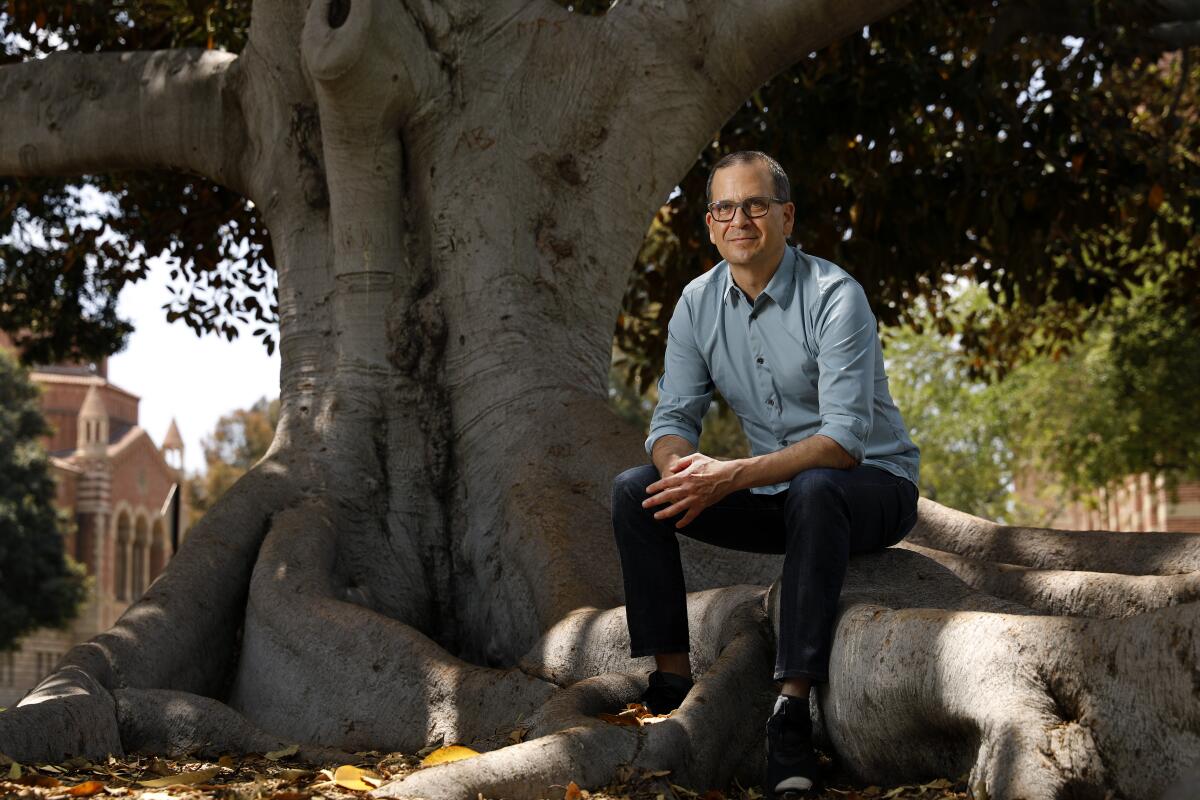
It’s the weekend and I’ll be jamming to the cumbia version of Tchaikovsky’s “Swan Lake.” I’m Carolina A. Miranda, arts and urban design columnist at the Los Angeles Times, as well as the paper’s unofficial northern Peruvian cumbia ambassador, here with the week’s essential culture news.
Making the Latino central
Since 2002, Chon Noriega has led UCLA’s Chicano Studies Research Center, an academic hub that was launched in the late 1960s, and that has been key to archiving Chicano historical documents, producing original scholarship and publications, and commissioning oral histories of important artists, activists and political figures. After 19 years, he is stepping down from that role — though he will remain as a professor in the department of film, television and digital media.
As he prepares to pass the baton to his successor (who has not been publicly announced), Noriega and I sat down for an exit interview.
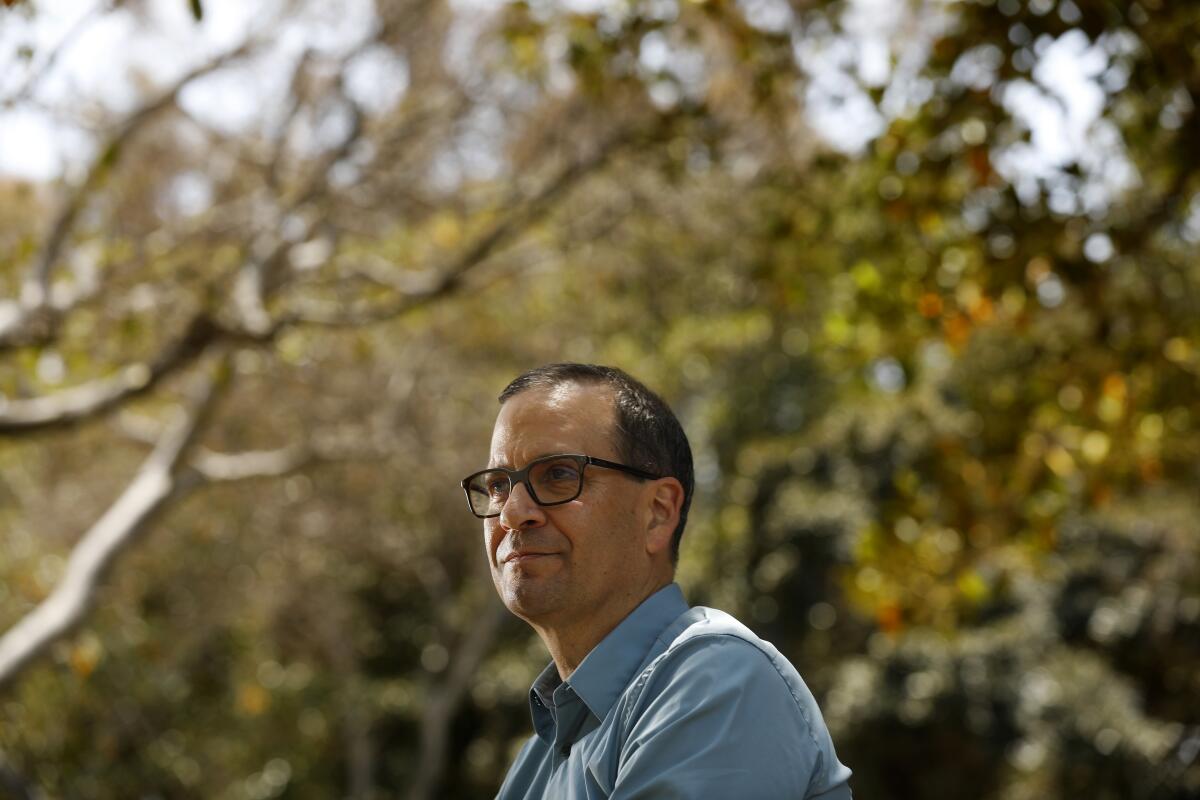
In an exchange laced with colorful stories and at least one joke at Ben Affleck’s expense, Noriega reviewed some of the center’s many achievements: acquiring caches of historic photographs and the papers of key figures, such as the late City Councilman and U.S. Rep. Edward Roybal. There is also a highly entertaining story about how he managed to track down the indie movie that is often described as “the first Chicano film.” (It involves lots of digging, a garbage can and a station wagon.)
The center’s work is about making a case for the importance of Chicano — and by extension, Latino — history. And this is no small thing: To this day, Latinos remain wildly underrepresented in most areas of culture (as I wrote in the wake of the mass shooting in El Paso in 2019). Which is part of what has made his work at UCLA so critical.
“It can influence education,” Noriega told me. “It creates the books and the articles that inform how we teach things. We still do an uneven job of telling national history. We haven’t effectively told that story in a way that really gives presence to all of the groups. It only brings them in as points of conflict.”
Make the most of L.A.
Get our guide to events and happenings in the SoCal arts scene. In your inbox once a week.
You may occasionally receive promotional content from the Los Angeles Times.
Highly illuminating was the part of the conversation devoted to his role as an advisor to the Whitney Museum’s contentious 1993 biennial — in which L.A. artist Daniel Joseph Martinez created a work that consisted of a series of museum badges that when put together read: “I Can’t Imagine Ever Wanting to be White.”
Though Noriega presented 30 Chicano artists to the leadership at the Whitney for that show, only two were selected. In addition to one Puerto Rican artist who was also on the roster, it brought the sum total of Latino representation in that exhibition to a whopping three — none of whom were women. In response, Noriega sat down and banged out an epic memo to Whitney curator Elisabeth Sussman about the ways in which this not only failed to capture a growing Latino presence in the U.S., but also failed to recognize the Latino as American.
“At present, Chicano, Puerto Rican and Cuban American works of art are not understood as part of the national patrimony,” he wrote. “In my presentation, I reviewed four curatorial models that have developed in response to the exclusion of Latino artists from the category of ‘American.’ These models revealed the need to shift away from a reformist approach in which the center is supplemented with marginal ‘others.’ In such an approach, the inclusion of Latino artists takes place as a kind of affirmative action, which thereby confirms rather than challenges the center.”
In reading it, I was struck by how 28 years later, we are still regularly having this same exact conversation.
You can read Noriega’s full memo in the archives of the International Center for the Arts of the Americas at the Museum of Fine Arts, Houston. And you can find my Q&A right here.
Art after the coronavirus
Times theater critic Charles McNulty writes that if theater is going to make a comeback, proof of vaccination will be key. “Broadway producers are discussing making vaccinations a requirement for cast and crew,” he writes. “But there seems to be some hesitancy to impose this on theatergoers, even though they’ll be sitting cheek by jowl in rows that could make flying coach seem like a fantastic luxury. ... fear of offending vaccine refuseniks — or more precisely, turning away their credit cards — shouldn’t be top of mind at this critical juncture.”
That sound you just heard? Charlie’s inbox exploding after this story landed on the internet.
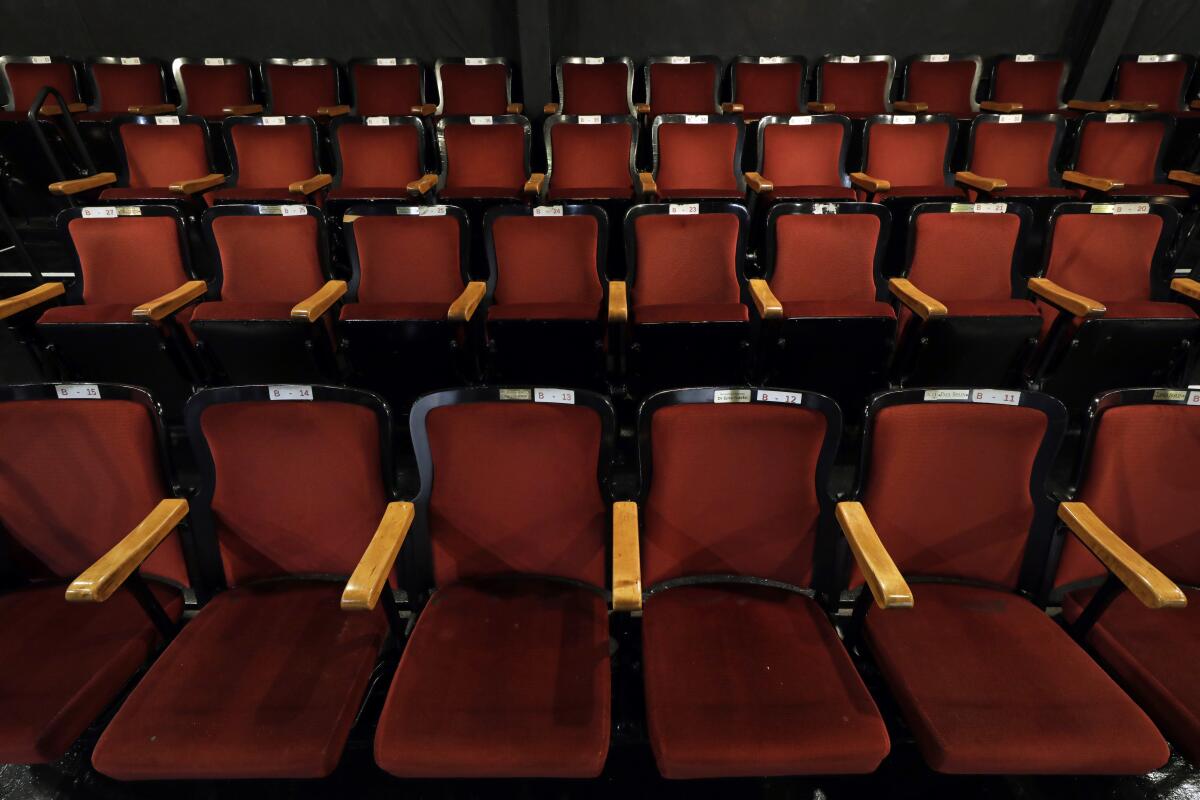
Sort of related: an interesting piece by scholar Joel Christensen on how theater has and can serve as a ritual of healing.
Last week the indefatigable Jessica Gelt, my colleague, wrote about the reopening of the Hollywood Bowl. [Insert smiling emoji with a single tear.] Over the weekend, contributor Catherine Womack caught up with the first folks to attend a concert there: frontline workers who helped hold everything together during the pandemic.
Classical music critic Mark Swed, of course, reviewed the show: the L.A. Phil performing selections from Jessie Montgomery’s 2021 “Starburst” and Beethoven’s Symphony No. 3 — as well as a surprise appearance by Billie Eilish. The show was less a brash return than a tentative first step, writes Swed. “It was the Bowl, but not yet the full Bowl. It was the L.A. Phil, not yet the full L.A. Phil.”
You can find all of The Times’ reporting about the reopening of the Bowl at this link.
In the galleries and beyond
Artist Cauleen Smith takes toile wallpaper and gives it a contemporary SoCal spin in a solo show at LACMA titled “Give It or Leave It.” Embedded into her design are images of the Watts Towers, Noah Purifoy’s desert museum in Joshua Tree and Alice Coltrane’s ashram in Agoura (which was lost to the catastrophic fires of 2018).
“An L.A.-based filmmaker (she’s on the faculty at CalArts), Smith unsurprisingly brings a cinematic quality to her absorbing wall covering, one that careens through layered time and space,” writes Times art critic Christopher Knight of the piece — one of several installations in the show that dwell on aspects of Black spirituality and creativity.
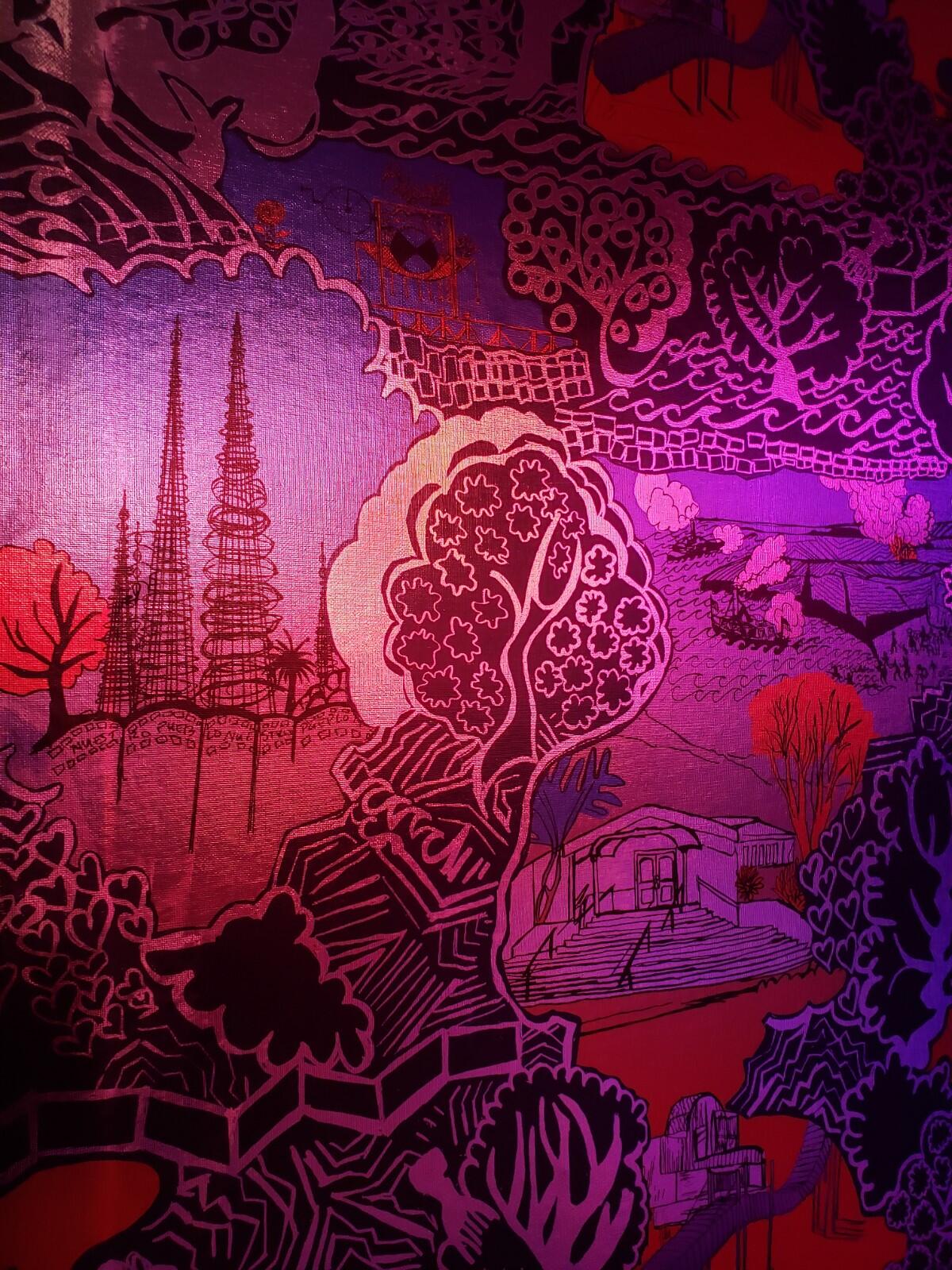
Plus, Knight reviews the new three-part PBS documentary “Inside the Met,” about New York’s Metropolitan Museum of Art. The short of it: “You can’t buy fluffier promotion than this.”
Not ready to travel? What about an experience that channels traveling? Games critic Todd Martens writes about the immersive Madcap Motel installation in downtown L.A., which imagines a motel setting — one touched by elements of the magical and the surreal. “Don’t come to Madcap to critique it as the best piece of art or theater you’ve ever seen,” Paige Solomon, the installation’s chief executive and creative director, tells Martens. “Come to Madcap to play, to get out of your head.”
Design time
In addition to Chicano history, I’ve been knee-deep in L.A. design this week — starting with an architectural design challenge launched by the city’s chief design officer Christopher Hawthorne and Mayor Eric Garcetti’s Office of Budget and Innovation. “Low Rise: Housing Ideas for Los Angeles” invited architects to imagine new ways of designing higher density housing that fits L.A.’s low-rise profile. In other words: no apartment towers; instead, these are structures inspired by the bungalow courts and condo complexes of L.A.’s past. The winners include L.A. design firms such as Louisa Van Leer Architecture, Omgivning and Studio-MLA.
Plus Slate’s Henry Grabar has another piece on the competition that goes into the historical ways in which L.A. has capped density and therefore, the construction of more housing.
The housing crisis is raising the need to design for a denser, more efficient L.A. So is climate change. In fact, climate change is also making it imperative to design our landscapes in more resilient ways. To that end, I report on how neighborhood parks are being designed to capture, clean and store valuable rainwater. One of the most recent projects in this vein is Magic Johnson Park in Willowbrook, which not only received a landscape overhaul by AHBE/MIG, but also retooled its water engineering to make far better use of water. “If you think about what we do, it makes no sense,” says Dan Lafferty, at the L.A. County Department of Public Works. “We import water from the Colorado River and then we dump it on the ground.”
Enjoying this newsletter? Consider subscribing to the Los Angeles Times
Your support helps us deliver the news that matters most. Become a subscriber.
Also, Boom California has a great book excerpt from “We Are the Land: A History of Native California,” by historians Damon B. Akins and William J. Bauer Jr., about California’s water politics and how Indigenous people are often written out of the story. In the case of L.A.’s water wars, they write: “The story, often told as a fight between small farmers and ranchers and the city of Los Angeles, took place on Paiute land and reinscribed the colonial process as it erased the wage labor that enabled the Owens Valley Paiutes to retain a tenuous grip on their homeland.”
Plays and players
Theatrical companies often come together and then disperse as demanded by the rigors of performances. But L.A.’s Inner City Shakespeare Ensemble, which pairs young performers with professional mentors, has established networks that extend well beyond a single production. Founded by the energetic Melanie Andrews, a lifelong L.A. educator, the Ensemble supports students of color from under-resourced schools by providing artistic outlets — but also by filling critical needs. Andrews has helped students move into college dorms and secure financial aid, and when the uprisings landed, she gave them an outlet to channel their grief. “The arts is an underground way to build people, to allow them to tell their stories,” she tells The Times’ Makeda Easter.
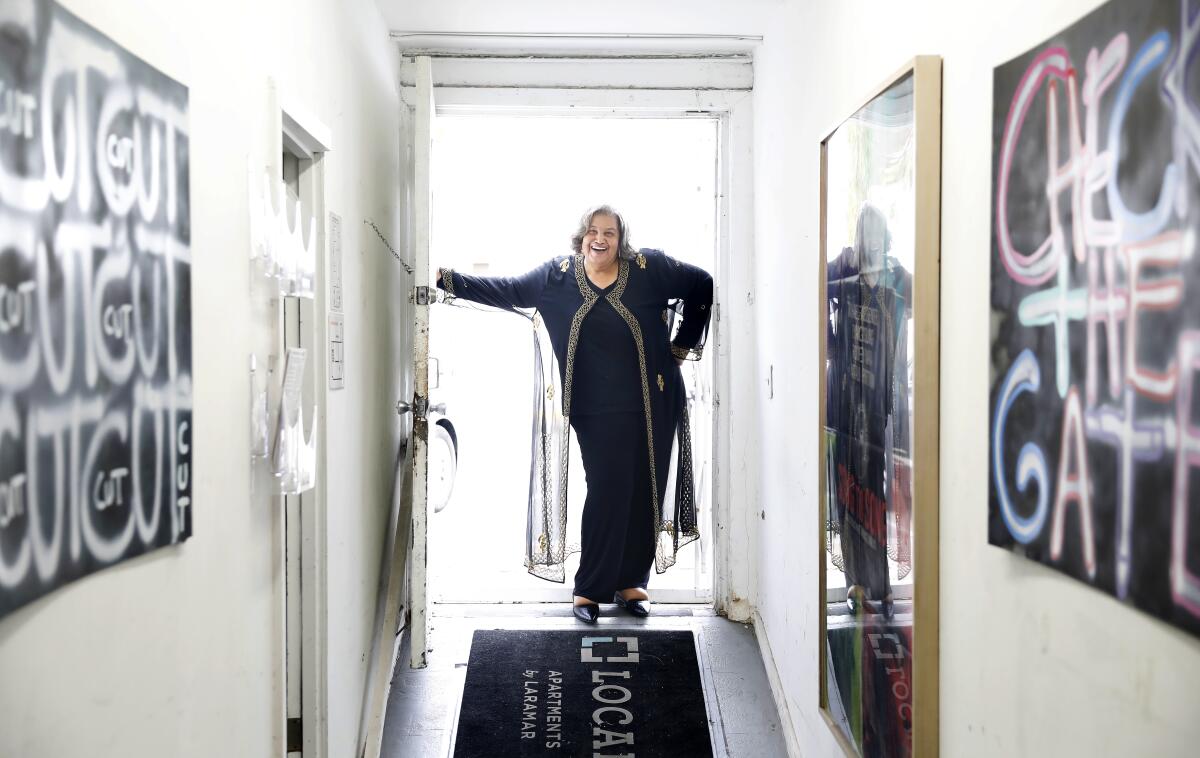
Theater is an industry that has long prized thinness. The Times’ Ashley Lee looks at how this tendency affects performers — and how the issue is now up for renewed debate as performers begin to emerge from the pandemic. In particular, musical theater’s lack of body diversity “has been one of this industry’s third-rail issues for decades,” theater scholar Ryan Donovan tells Lee. “When it comes to iconic lead roles like Cinderella, Eliza Doolittle and Nellie Forbush, for example, they’re rarely ever played by anyone outside a particular body type. It becomes this self-reinforcing thing that says there’s only one way actors can look in order to be successful.”
Art and unrest
Late last month, cities in Colombia erupted in protest over tax reforms proposed by President Ivan Duque that would have raised the prices of basic necessities (food, water, electricity) and most deeply affected the poor and middle class — populations already reeling from the pandemic. Duque has since withdrawn the reforms, but the scenes on the street have been one of brutal police repression. (The exact number of dead fluctuates between 15 and more than 40.)
Amid the crackdown, Duque hosted a series of meetings in a 2018 installation by artist Doris Salcedo called “Fragmentos,” an “anti-monument” that marks the horrific death toll from the country’s five-decade-long guerrilla war. Salcedo told Hyperallergic that using her work as backdrop for political meetings was unacceptable: “This unconsented event happened in the middle of a terrible civil unrest that has left more than 30 citizens killed, dozens disappeared, hundreds injured, and cases of sexual abuse.”
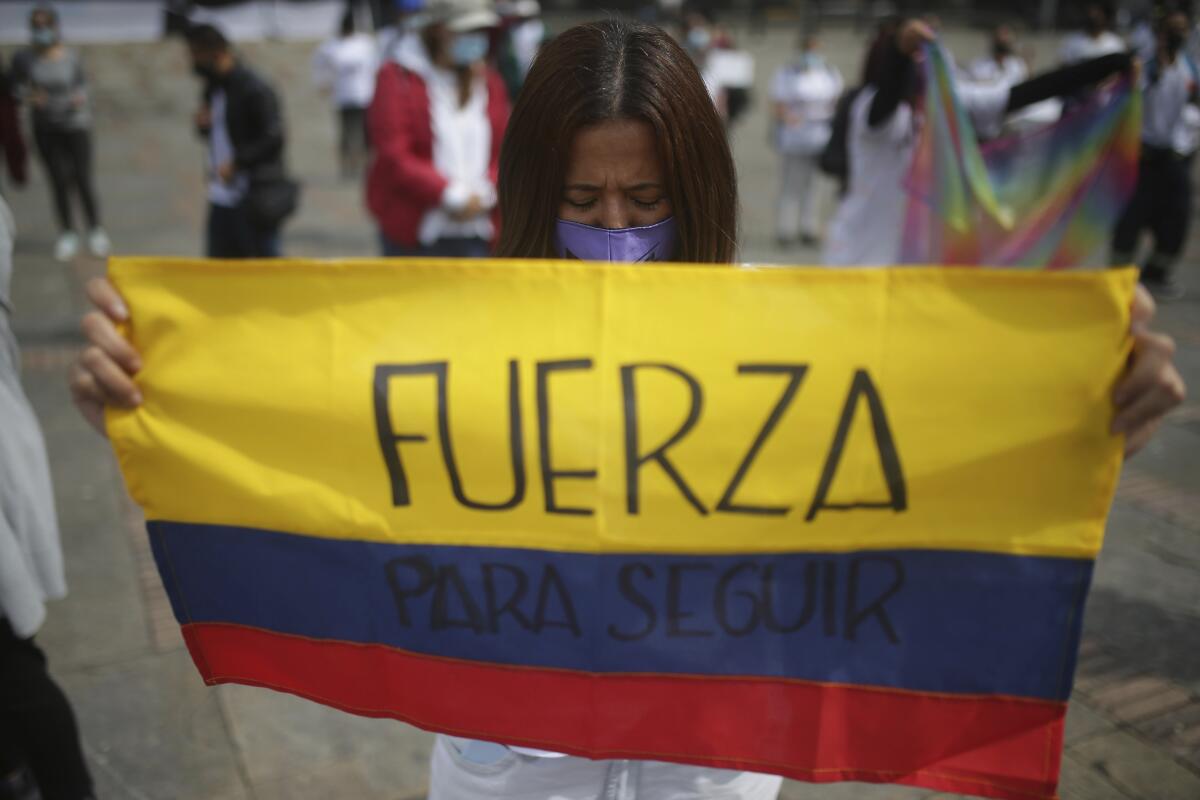
Meanwhile in Cuba: Coco Fusco has an absolutely blazing piece about the artist and dissident Luis Manuel Otero Alcántara, who was staging a hunger strike amid crackdowns on speech in that country. “His work points to the contradictions between his society’s purported ideals and the governing elite’s ruthless pursuit of total power and wealth,” she writes. “He has been thrown in jail dozens of times, and tens of thousands of Cubans around the world follow him online. He is self-taught and of humble origins. He lives in a poor neighborhood in Old Havana, not far from the luxury hotels that tourists flock to so they can visit Cuba ‘before it changes.’”
And in Israel: A prominent rabbi spoke out for preserving the sanctity of Al Aqsa Mosque. And Palestinian artist Khaled Jarrar has minted a jar of Palestinian soil as an NFT.
Essential happenings
Weekend events? Matt Cooper’s got ‘em — 27 of them. This includes an interactive performance staged by CAP UCLA that will feature Mikhail Baryshnikov in a work inspired by Anton Chekhov’s “The Cherry Orchard,” and a free pop-up show organized by the Museum of Neon Art and L.A. artist Dani Bonnet at the Hollywood Palladium that will bring ever more bright lights to Hollywood.
Looking for a couple of good gallery shows? I recommend the small show of paintings by Roberto Gil de Montes at Park View / Paul Soto, which seem to perfectly channel our disembodied post-pandemic mental states. (Or is that just my state?)
Also channeling the disembodied is an installation of work by Brazilian artist Lygia Pape’s work at Hauser & Wirth, which features sculptures from her visceral Tupinambá series. The series represents one of her final bodies of her work and one that is rarely seen, exploring theories of anthropophagy, or ritual cannibalism — one that isn’t simply about the consumption of flesh, but is instead about assimilating “the spiritual capacities of another.” It’s a surreal tour of artificial red feathers and random body parts.
Passages
Helmut Jahn, a German-born architect who helped redefine the nature of civic architecture in his adopted city of Chicago with his design of the machine-like Thompson Center, is dead at 81. (Architects Elizabeth Blasius and Jonathan Solomon have a good op-ed in the Chicago Sun-Times about why the endangered Thompson Center should be preserved.)
Art Gensler, the Bay Area architect who grew a tiny architectural operation that began with a single draftsman and $200 into one of the biggest firms in the world, has died at 85.
Robert Maguire, the developer behind L.A.’s crenelated U.S. Bank Tower (designed by Henry Cobb), an icon of the downtown skyline whose construction helped save the main branch of the L.A. Public Library, has died at 86.
In other news
— Since we’re on the subject of the U.S. Bank Tower, my colleague Roger Vincent reports that the new owners say they will redo the place to give it a more boutique hotel vibe. As part of that, the Skyslide attraction will be permanently shut down.
— From the Department of the Rich Need to Pay More Taxes: New York City has a new $260-million floating island park funded by Barry Diller and designed by Thomas Heatherwick.
— Workers at the Whitney Museum of American Art make moves to unionize.
— Fulton Leroy Washington, known as Mr. Wash, has been one of the standouts at the Hammer Museum’s biennial. Next month, he will deliver the commencement keynote to UCLA’s School of the Arts and Architecture Class of 2021. In a new podcast, he talks about the roots of his art — cultivated during a prison term that was ultimately commuted by President Obama.
— The Cerne Giant, a land glyph in England that depicts a male figure bearing a club (along with a prominent johnson), is much younger than originally thought.
— A fascinating story about how a white scholar ended up owning the copyright to the only written record of the Indigenous Penobscot language.
— New Yorker critic Anthony Lane reviews a fat new biography of Tom Stoppard.
And last but not least ...
I will most definitely be doing important architectural think pieces about the Trixie Motel in Palm Springs.
The biggest entertainment stories
Get our big stories about Hollywood, film, television, music, arts, culture and more right in your inbox as soon as they publish.
You may occasionally receive promotional content from the Los Angeles Times.




